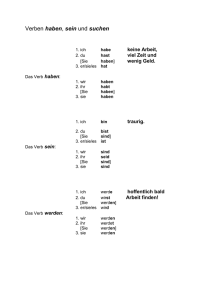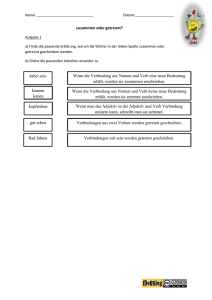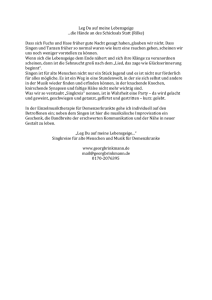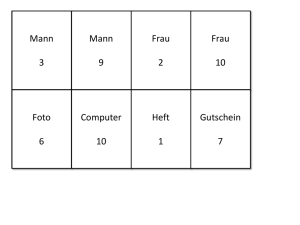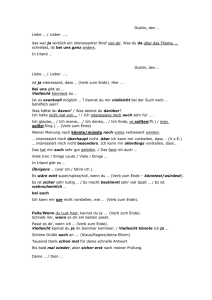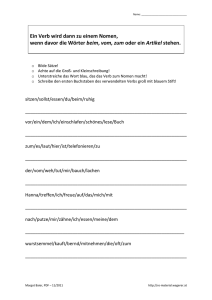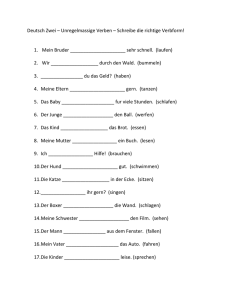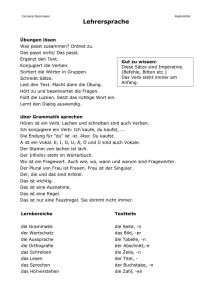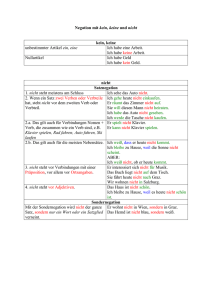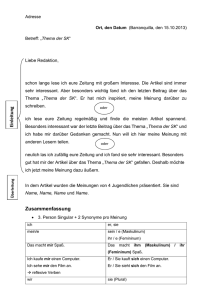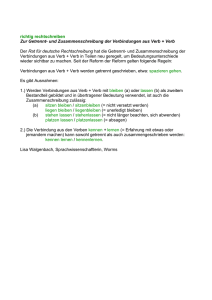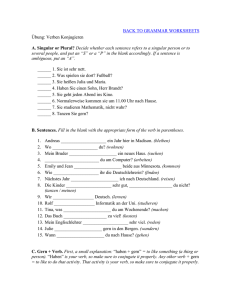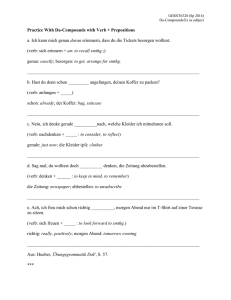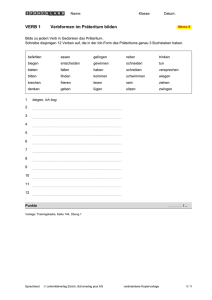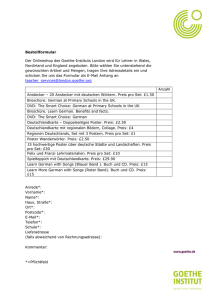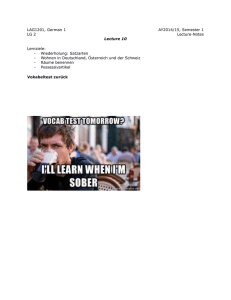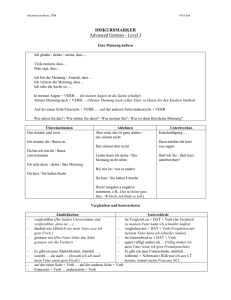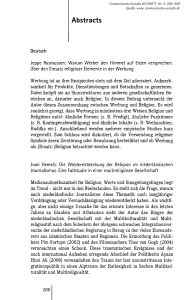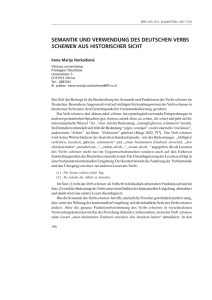The Dutch verb schijnen exhibits a similar (but by no means
Werbung
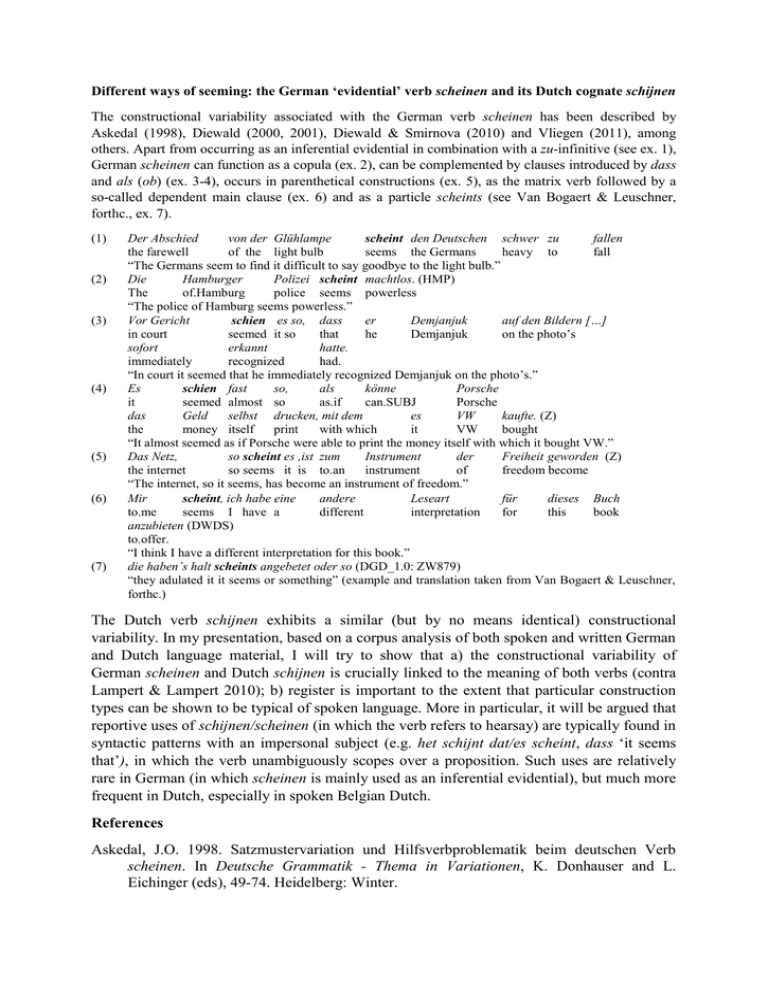
Different ways of seeming: the German ‘evidential’ verb scheinen and its Dutch cognate schijnen The constructional variability associated with the German verb scheinen has been described by Askedal (1998), Diewald (2000, 2001), Diewald & Smirnova (2010) and Vliegen (2011), among others. Apart from occurring as an inferential evidential in combination with a zu-infinitive (see ex. 1), German scheinen can function as a copula (ex. 2), can be complemented by clauses introduced by dass and als (ob) (ex. 3-4), occurs in parenthetical constructions (ex. 5), as the matrix verb followed by a so-called dependent main clause (ex. 6) and as a particle scheints (see Van Bogaert & Leuschner, forthc., ex. 7). (1) (2) (3) (4) (5) (6) (7) Der Abschied von der Glühlampe scheint den Deutschen schwer zu fallen the farewell of the light bulb seems the Germans heavy to fall “The Germans seem to find it difficult to say goodbye to the light bulb.” Die Hamburger Polizei scheint machtlos. (HMP) The of.Hamburg police seems powerless “The police of Hamburg seems powerless.” Vor Gericht schien es so, dass er Demjanjuk auf den Bildern […] in court seemed it so that he Demjanjuk on the photo’s sofort erkannt hatte. immediately recognized had. “In court it seemed that he immediately recognized Demjanjuk on the photo’s.” Es schien fast so, als könne Porsche it seemed almost so as.if can.SUBJ Porsche das Geld selbst drucken, mit dem es VW kaufte. (Z) the money itself print with which it VW bought “It almost seemed as if Porsche were able to print the money itself with which it bought VW.” Das Netz, so scheint es ,ist zum Instrument der Freiheit geworden (Z) the internet so seems it is to.an instrument of freedom become “The internet, so it seems, has become an instrument of freedom.” Mir scheint, ich habe eine andere Leseart für dieses Buch to.me seems I have a different interpretation for this book anzubieten (DWDS) to.offer. “I think I have a different interpretation for this book.” die haben’s halt scheints angebetet oder so (DGD_1.0: ZW879) “they adulated it it seems or something” (example and translation taken from Van Bogaert & Leuschner, forthc.) The Dutch verb schijnen exhibits a similar (but by no means identical) constructional variability. In my presentation, based on a corpus analysis of both spoken and written German and Dutch language material, I will try to show that a) the constructional variability of German scheinen and Dutch schijnen is crucially linked to the meaning of both verbs (contra Lampert & Lampert 2010); b) register is important to the extent that particular construction types can be shown to be typical of spoken language. More in particular, it will be argued that reportive uses of schijnen/scheinen (in which the verb refers to hearsay) are typically found in syntactic patterns with an impersonal subject (e.g. het schijnt dat/es scheint, dass ‘it seems that’), in which the verb unambiguously scopes over a proposition. Such uses are relatively rare in German (in which scheinen is mainly used as an inferential evidential), but much more frequent in Dutch, especially in spoken Belgian Dutch. References Askedal, J.O. 1998. Satzmustervariation und Hilfsverbproblematik beim deutschen Verb scheinen. In Deutsche Grammatik - Thema in Variationen, K. Donhauser and L. Eichinger (eds), 49-74. Heidelberg: Winter. Diewald, G. 2000. Scheinen als Faktizitätsmarker. In Wortschatz und Orthographie in Geschichte und Gegenwart. Festschrift für Horst Haider Munske zum 65. Geburtstag. M. Habermann, P. O. Müller and B. Naumann (eds.), 333-355. Tübingen: Niemeyer. Diewald, G. 2001. Scheinen-Probleme: Analogie, Konstruktionsmischung und die Sogwirkung aktiver Grammatikalisierungskanäle. In Modalität und Modalverben im Deutschen, R. Müller and M. Reis (eds.), 87-110. Hamburg: Buske. Diewald, G. and Smirnova, E. 2010. Evidentiality in German. Linguistic realization and regularities in grammaticalization. Berlin, New York: Mouton de Gruyter. Lampert, G. and Lampert, M. 2010. Where does evidentiality reside? Notes on (alleged) limiting cases: seem and be like. In STUF Akademie Verlag 63(4): 308-321. Van Bogaert, J. and Leuschner, T. to appear. Dutch (‚t) schijnt/German scheint(‚)s: On the grammaticalization of evidential particles. Studia Linguistica. Vliegen, M. 2011. Scheinbar identisch: niederländisch schijnen, deutsch scheinen In Neue linguistische Perspektiven, W. Kürschner, R. Rapp, J. Strässler, M. Vliegen and H. Weber (eds.), 231-244. Frankfurt: Peter Lang.
